From her conception in 1911 to her survival at Pearl Harbor and use as a target for atomic testing, the battleship Nevada had a remarkable career. She served all around the world in times of war and peace, but it was her remarkable durability that strikes many readers.
The construction of Nevada was authorized in a period of rising tensions and the rapid introduction of new technologies. Not long after construction on Nevada began, that tension in Europe would lead to World War I.
The Nevada was the first of a new class of US battleships to use triple gun turrets and “all or nothing” armor. With 14-inch guns, the use of triple turrets allowed more firepower to be put in the forward position. When bigger guns were used with triple turrets, such as those on the British Nelson-class battleships, this created an often-unstable firing platform.
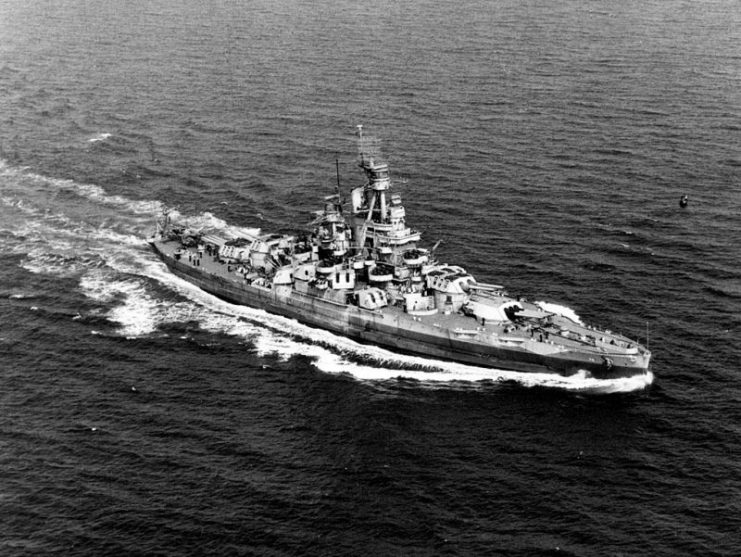
Later battleships like the Colorado had bigger caliber guns and went back to two turrets, and ships with more tonnage like the North Dakota could handle the weight of four turrets in superfiring position.
On Nevada though, three turrets gave the ship a decent mix of firepower, weight, and speed. This development combined with the use of oil instead of coal for fuel represented a leap in dreadnought technology at the time.
The “all or nothing” armor came from a new military philosophy regarding potential threats. The increasing range and size of weapons often meant that battles took place at longer ranges. So designers maximized armor in the most likely areas to be targeted, while other areas of the ship had little to no armor.
This allowed the overall tonnage of the ship to remain low, which improved the ship’s speed. The design became standard around much of the world at the time.
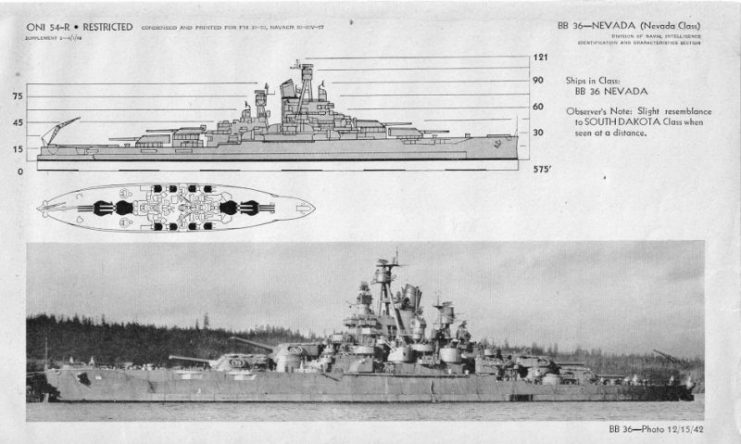
The major threats during the period leading up to World War I were torpedo boats and submarines, so the armor on the hull was far more sturdy than that on the deck. This would prove almost fatal when airplanes took a larger role in the fighting during World War II.
The Nevada didn’t see much overseas service in World War I due to fuel oil shortages in Great Britain. Toward the end of the war, it protected convoys out of Bantry Bay in Ireland.
After the war it served in many diplomatic missions and goodwill tours, and it was upgraded during those interwar years with tripod masts, an engine upgrade from the stricken North Dakota, and an increase in the caliber and number of its various guns.
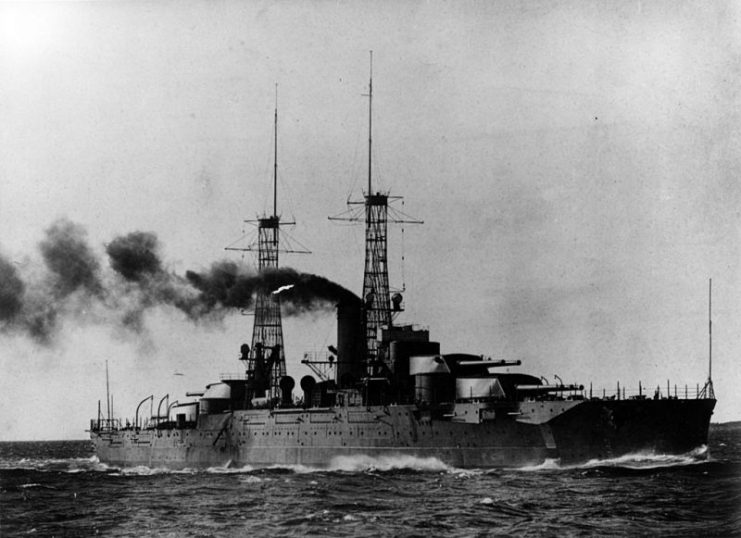
Nevada’s location at Pearl Harbor at the end of Battleship Row allowed it to maneuver during the surprise Japanese attack on December 7, 1941 that brought the US into World War II. It was the only ship to do so and as a result it became a priority target for the Japanese pilots.
The Nevada sustained heavy damage, and would have suffered the same fate as the Arizona except for the fact that the shells in the main magazine were being exchanged for new and it was mostly empty at the time. The relatively thin armor on the deck made it particularly susceptible to bombing runs and the Nevada ended up running aground, suffering a total of 60 killed and 109 injured during the attack.
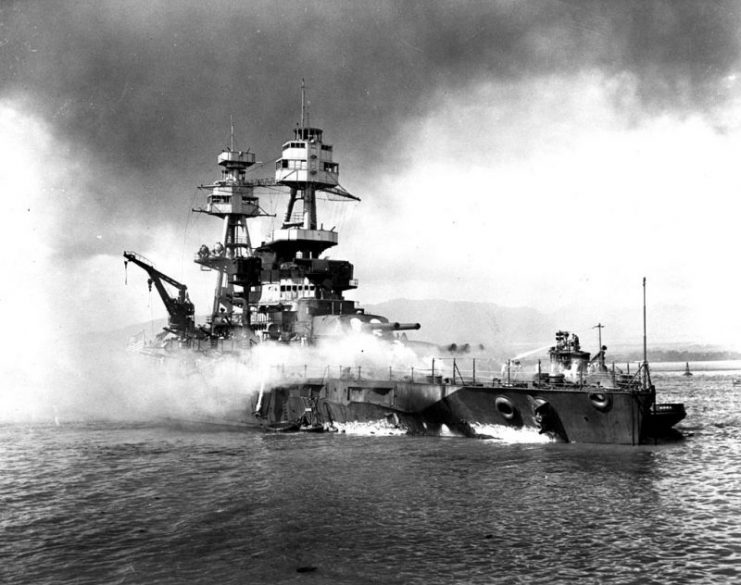
But the ship wasn’t done. It was repaired, upgraded, and sent to serve on convoy duty in the Atlantic Ocean. Even though the battleship was approaching 30 years old, it was still incredibly useful in the Battle of the Atlantic in case the Germans tried to use capital ships to destroy merchant shipping. This freed up newer and more advanced ships for other missions.
In June 1944, the Nevada unloaded a furious barrage in support of the D-Day invasion. Its sailors received a great deal of praise for their exceptional accuracy, and were thankful that in the 27 times their ship was straddled by the fire from shore batteries it was never hit.
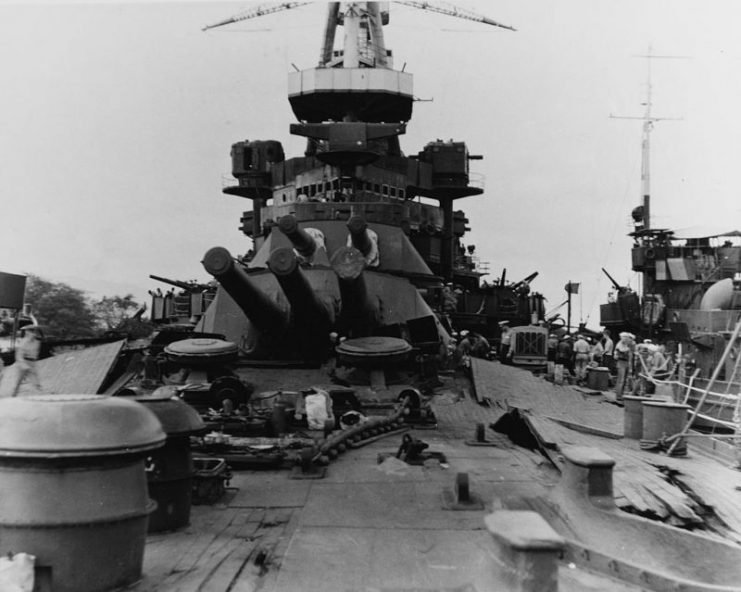
After this Nevada sailed to the Pacific theater where it again pummeled landing spots, this time at Iwo Jima and in Okinawa. It survived a kamikaze attack that crashed directly on its main deck, proving those deck repairs were worth it!
After the war Nevada was deemed too old to continue in the fleet and was assigned as a target at the Bikini Atoll for atomic testing. The ship was painted bright orange and sat near the atoll like a neon sentry.
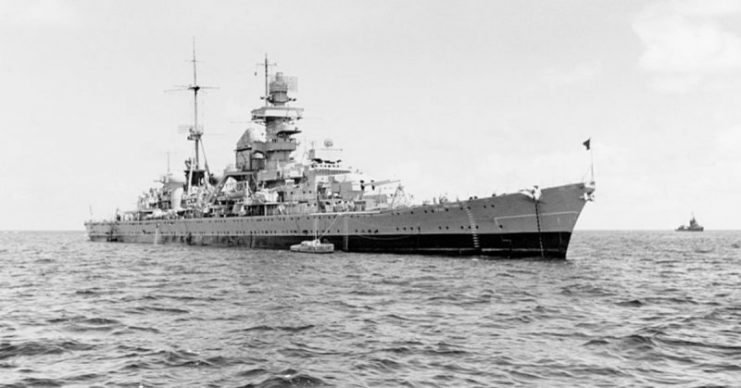
Nevada survived two different atomic tests, code named “Able” and “Baker.” In the first, the atomic bomb was delivered by bomber, and in the second one 24 days later, a bomb was detonated underwater.
Nevada suffered heavy damage and was incredibly radioactive, but remained afloat and was towed back to Pearl Harbor for decontamination and other tests. It was later decommissioned and sunk as a gunnery practice target.
Read another story from us: Understanding the USS Arizona: Sunken Ship Reveals Tragic Secrets
Throughout its career Nevada became an innovator, protector, and a rather durable ship for the US Navy. It survived the devastation of Pearl Harbor, living to help pummel the Axis Powers into submission.
Even when its final assignment was supposed to be getting blown up by an atomic bomb, the ship was too stout to die. Its entire career is a testament to the inspiring awe of battleships and their seamen.
